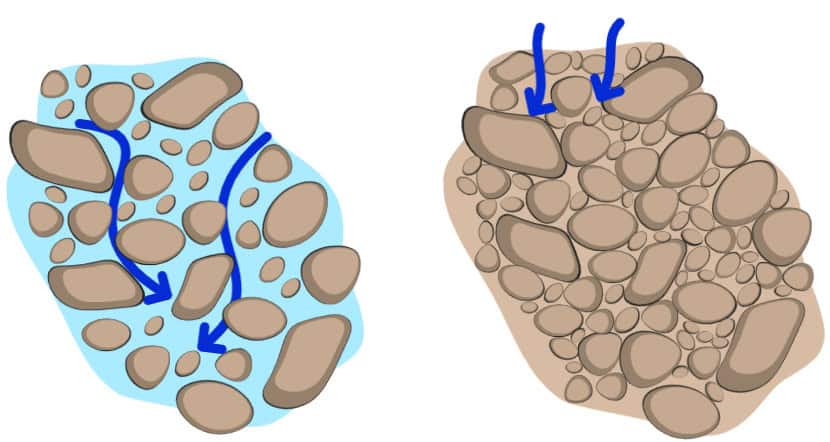This activity provides students with a simple and effective way to visualize permeability. It allows them to evaluate how the composition of soil and rock influences the permeability of these substances. The connectivity of the pore space in rocks and soils influences subsurface fluid flow, e.g., soils ability to distribute water for plant roots (part of the water cycle) and humans’ ability to extract Earth’s natural reservoirs of oil and gas for energy.
Permeability is the capacity of a porous material, such as soil or rock, to transmit fluids (gas or liquid) at a certain volume rate. Fluids can more easily flow through a material with high permeability than one with low permeability. In nature, the ability of soil to absorb water as fast as it rains limits the collection of water on the surface and eventual run-off. Soil is much more permeable than rock (or any human-made pavement). As we go deeper into the subsurface, rock layers have a reduced ability to transport fluids (e.g., water, oil and gas). Permeability is not only related to porosity, but also the size and shape of the pore spaces inside the material and how connected they are.
Our activity Go with the Flow: Permeability Demonstration allows participants to create different flow mediums from glass beads and hypothesize how particle size impacts flow rate.
A teacher lesson plan is provided below and this document contains standards correlation and a link to download any student documents referred to in the lesson plan.
